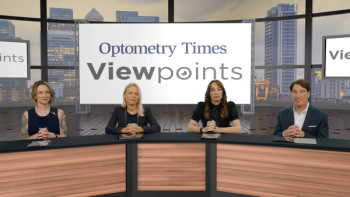
G360 2025: Lifestyle modifications for glaucoma
Yvonne Ou, MD, outlined lifestyle modifications for glaucoma management that have proven beneficial, including yoga and cycling.
Yvonne Ou, a professor of ophthalmology at the University of California San Francisco, discussed lifestyle modifications for glaucoma management, including exercise, diet, yoga, and caffeine. Moderate aerobic exercise can lower eye pressure, while high-weight workouts may increase it. Yoga's benefits include mindfulness, but inverted postures can elevate eye pressure. Nicotinamide supplementation shows promise for neuroprotection, but high doses may cause liver toxicity, especially in patients with liver disease. Ou emphasized the need for better eye pressure control and neuroprotection advancements in the coming decades.
Video Transcript:
Editor's note: The below transcript has been lightly edited for clarity.
Yvonne Ou, MD:
My name is Yvonne Ou and I am a professor of ophthalmology at the University of California San Francisco. This year, I'm speaking about lifestyle modifications for glaucoma. And I tried to take folks through understanding that topic, from preclinical data all the way to human patient data. And so I talk about a couple different areas, including exercise, supplementation, for example, with nicotinamide, diet, yoga, and we talk a little bit about caffeine. I think this is a important topic because patients all the time are asking us, "What else can I do about my glaucoma? What are some modifications I can make in my lifestyle that might help my glaucoma?" And I think as ophthalmologists, we can make certain recommendations. We can tell patients that certainly moderate aerobic exercise such as walking or running or cycling, all help with eye pressure. You know, high weight workouts, strength exercising may potentially increase eye pressure. We don't know whether that affects glaucoma progression, but certainly we know that eye pressure will go up when you do these very high weight bearing exercises. With regards to yoga and mindfulness meditation, we know that yoga itself, when the head is either below the heart or in these inverted postures, there can be elevated eye pressure. When you resume upright positioning, that eye pressure goes back to normal and also, again, unclear whether that actually affects glaucoma progression. But there are aspects of yoga, such as the breathing, the mindfulness meditation, that are really helpful. And I think encouraging patients to engage in that activity will definitely be helpful.
And then I'll just touch upon a little bit about nicotinamide. There's a lot of excitement. I was very excited when the initial animal studies were published in Science from Simon John's group, with regards to high dose nicotinamide supplementation for ameliorating glaucoma and neuro protection, and there are many ongoing randomized clinical trials now worldwide. I am excited to see what the results of those studies are, but there have been a couple of incidences, 1 in Singapore and 1 in the US, where there was drug induced liver toxicity with regards to high dose nicotinamide. And so I think it's very wise for ophthalmologists to be aware about that. The American Glaucoma Society and the American Academy of Ophthalmology have put out a position statement with regards to that. And the main take home message is that any patient with known liver disease should not be placed on nicotinamide, and high dose nicotinamide is not recommended, and that is at doses of 3 grams or greater per day, is not currently recommended outside of the confines of a randomized clinical trial.
Well, I have been in the field now and outside of my training for about 15 years, and so I came up in the time that MIGS was first being developed, and I think that innovation is very exciting in that area. I think though, in the next few decades, what I really want to see is really better options for our patients in terms of really getting better eye pressure control, whether that be surgically or through a pharmacologic that actually tackles beyond eye pressure lowering. I think the field overall has been stymied by progress in the area of neuro protection and neuro enhancement. And as a clinician scientist who works on trying to understand how the retinal circuitry is affected, and how it can be potentially resilient in glaucoma, I hope to see in the next few decades that we really bring neuro protection and neuro enhancement to reality.
Newsletter
Want more insights like this? Subscribe to Optometry Times and get clinical pearls and practice tips delivered straight to your inbox.








































